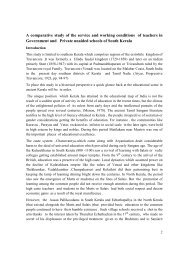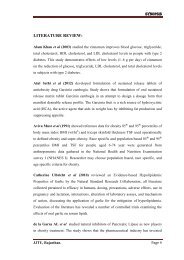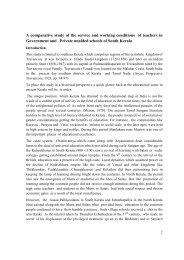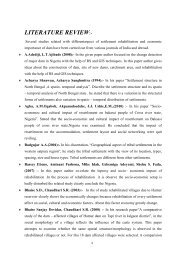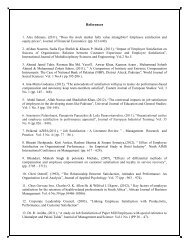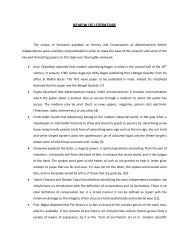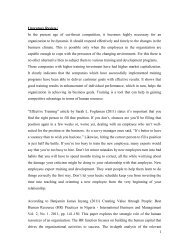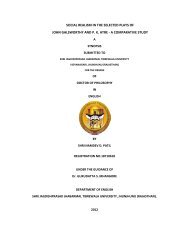mamta synopsis.pdf
mamta synopsis.pdf
mamta synopsis.pdf
Create successful ePaper yourself
Turn your PDF publications into a flip-book with our unique Google optimized e-Paper software.
SYNOPSIS FOR REGISTRATION FOR DEGREE OF DOCTOR OF<br />
PHILOSOPHY IN BOTANY<br />
Proposed title: Studies on lichens of Rajouri district with emphasis on air<br />
pollution monitoring.<br />
Background and justification:<br />
Rajouri, the border district of Jammu and Kashmir state, with an area of 2630 km 2<br />
partly comes under Pir Panjal mountain range. It lies between 70 – 74⁰4' East<br />
longitude and 32⁰58' – 33⁰35' North latitude. A wide diversity of vegetation from<br />
subtropical to alpine type exists in the region. Although some studies have been<br />
undertaken to document the information on higher plants of the district (Rashid, et<br />
al, 2008; Pant and Verma, 2009; Sarver, et al, 2009; Pant, 2011), lower groups of<br />
organisms, despite their pivotal role in stabilizing the ecosystems, have got least<br />
attention till date. As such no information is available on their number, diversity in<br />
the habit, habitat and their potential as useful organisms. The present study aims to<br />
fill the gap by collecting information on one such significant group i.e. lichens.<br />
Lichens are the most successful symbiotic organisms in nature, dominating 8% or<br />
more of the earth’s terrestrial area (Ahmadjian, 1995). These are among the most<br />
significant indicators of air pollution and ecosystem health (Upreti and Pandev,<br />
1994; Wolseley, et al, 1994; Upreti, 1995; Sloof, 1995; Mistry, 1998; Vokou, et<br />
al, 1999). Economically lichens are very significant, being used in traditional<br />
medicines (Gonzalez – Tejero, et al, 1995; Upreti, 1994; Negi and Kareem, 1996),<br />
as dyes (Casselman, 2001), as staple diet of the Alaskan reindeer (Skunke, 1969)<br />
and Himalayan musk deer (Negi, 1996). India is a rich centre of lichen diversity,<br />
contributing nearly 15% of the 13,500 species of lichens recorded in the world<br />
(Groombridge, 1992). Despite this, there is a poor record of lichen explorations<br />
and many areas, especially mountains and forest canopies remain unexplored




